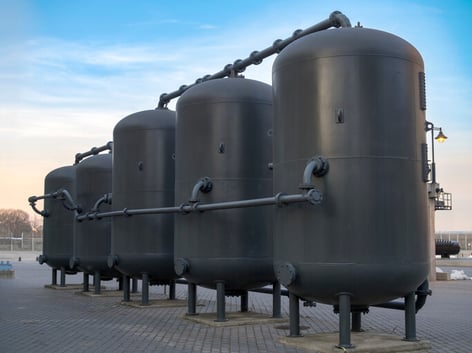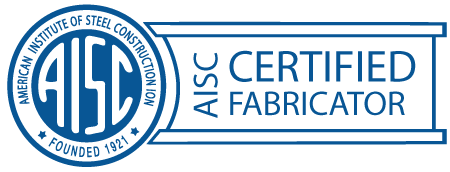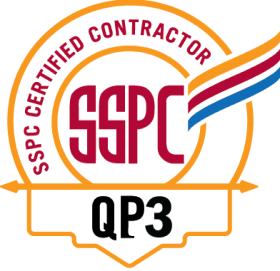Pressure vessels are containers for the containment of pressure, either internal or external. These robust vessels play a crucial role in most industries and thousands of people work closely with or around pressure vessels every day.
Despite their key role in our global economy, most people don’t understand what pressure vessels are. If this is something you’re curious about, continue reading to learn about the different pressure vessel designs on the market.

What Are Pressure Vessels and How Do They Work?
Pressure vessels for internal containment are the most common and are designed to store liquid, gas, or vapor at pressures greater than 15 PSI. Pressure vessels are either fired, like boilers, or unfired, such as storage tanks, processing vessels and heat exchangers - more on those in a moment.
Because these vessels can operate under incredible pressure, they must be fabricated in accordance with strict regulations. Two of the leading standards for pressure vessels are ASME Section VIII and API 510.
When selecting a pressure vessel manufacturing company to work with, choose a fabricator that closely follows industry standards and has strict quality control measures and vessel testing in place.
What’s the Difference Between Pressure Tanks & Pressure Vessels?
You’ll frequently hear people use the terms “pressure vessel” and “pressure tank” as synonyms, but are they actually the same?
No.
The primary distinction between vessels and tanks is that pressure tanks have a Maximum Allowable Operating Pressure (MAOP) of 15 PSI, while high-pressure vessels start at 15 PSI but can hold up to 3000 PSI (and even higher under special allowances).
Types of Pressure Vessels
There are many kinds of pressure vessels, with the three most common being storage vessels, heat exchangers, and process vessels.
Storage Vessels
There are a lot of products that require pressure in order to stored properly. Storage pressure vessels fulfill this need and each vessel must be uniquely designed to accommodate a specific type and temperature of product. Examples of product include propane, ammonia, butane, chlorine, and LPG.
Heat Exchangers
Heat exchangers enable heat to pass from one product to another without the two fluids coming into direct contact. The most common pressure vessel heat exchangers contain a series of metal tubes. One product flows through these tubes while a second product flows around the tubes. This transfers the heat from one product to the other.
One place where you can find this kind of pressure vessel in action is waste processing facilities, where heat exchangers are often used to salvage heat from waste gases.
Process Vessels
These versatile pressure vessels are often part of a production process line, where different tanks are used together to process a product. Tasks completed by process vessels include separation, heating, cooling, purification, blending, and more. Process vessels can be found in paint manufacturing, drug manufacturing, refineries, and food processing facilities, to name a few.

Pressure Vessel Designs & Shapes
The shape and size of a pressure vessel are determined by the design requirements, product being stored, the amount of space at the job site, and a company’s budget. The four most common pressure vessel shapes are:
- Cylindrical Pressure Vessels
- Spherical Pressure Vessels
- Horizontal Pressure Vessels
- Vertical Pressure Vessels
As for material, pressure vessels can be manufactured from a variety of materials but they are most commonly fabricated from carbon or stainless steel.
Types of Pressure Vessel Heads
Cylindrical, horizontal, and vertical pressure vessels are the most common kinds of vessels and they all require specialized ASME caps on each end. These caps are called “heads” and there are three primary kinds.
Hemispherical Head
The depth of this head is half of its diameter and the standard head thickness is about half the thickness of the pressure vessel’s shell. Despite being the thinnest head, this design is often more expensive than the other head options, as it can’t be fabricated from a single flat sheet and requires welding assembly.
Ellipsoidal Head
This head has an elliptical shape and the most popular ratio is 2:1 (which means that the width of the ellipse is double the depth). When it comes to handling pressure stresses, this head is less efficient than a hemispherical head, so ASME specifications require increased thickness.
Flanged & Dished Heads
Flanged and dished heads (F&D) are common on pressure vessels where the height of the vessel is limited and where pressure is only moderate. The tight knuckle radius on F&D heads requires them to be thicker than the vessel’s shell.
A Pressure Vessel Fabricator Near You
If you are looking for an expert pressure vessel manufacturer, look no further than T BAILEY LLC. We’ve been building tanks and vessels for over 25 years and our state-of-the-art fabrication and coating facility enables us to deliver robust vessels that stand the test of time.
Contact us today to learn more about our capabilities or to request a bid.
Consistently searching for "metal fabrication companies near me" in your search engine? Look no further than T Bailey!






